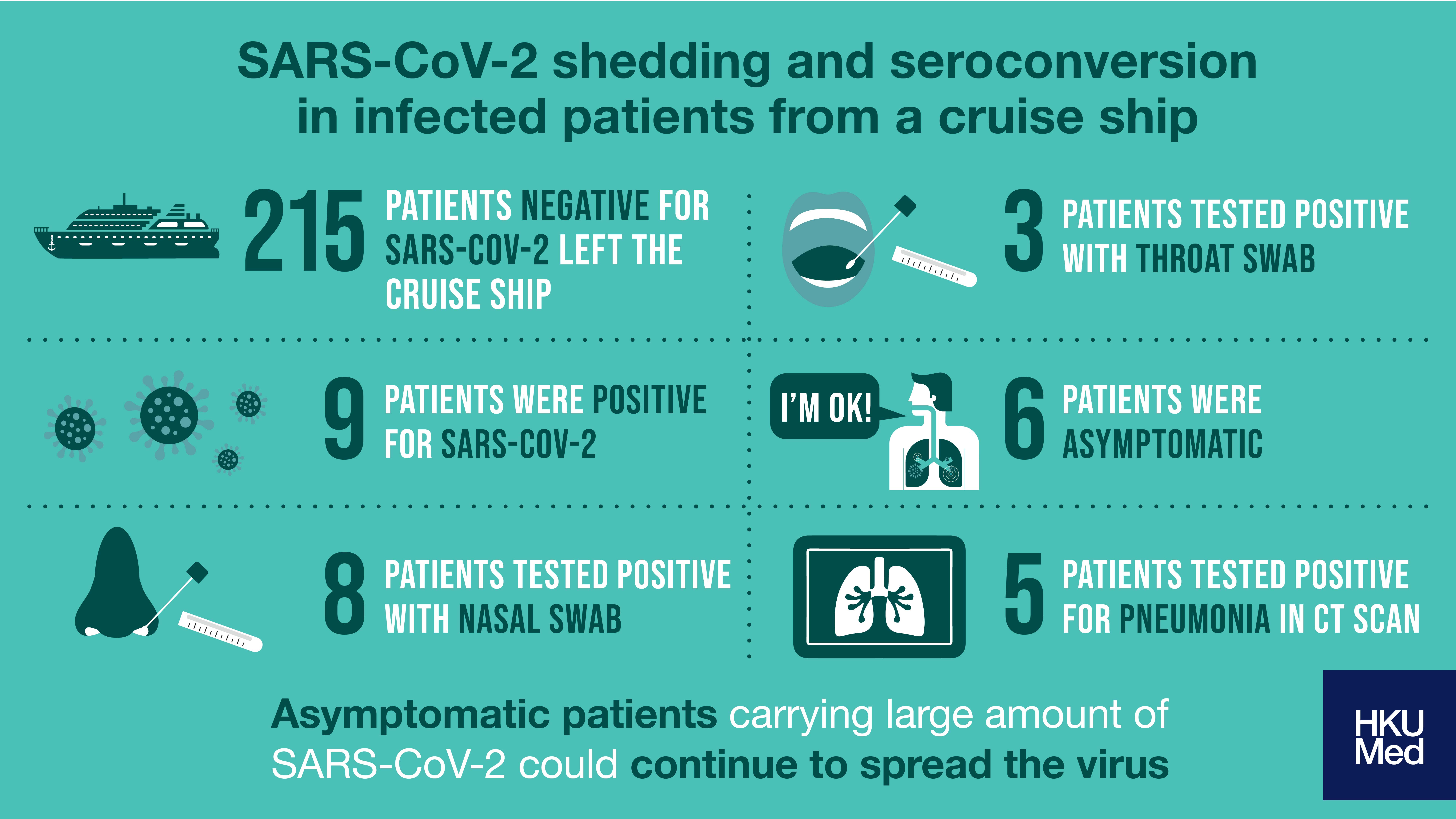The closed environment of a cruise ship mimics how we live and socialise in a city. A team of experts from HKUMed studied the shredding pattern of SARS-CoV-2 – the way the virus is released from an infected person – and the immune responses of those who were infected onboard the Diamond Princess cruise ship. This was the first study of its kind, and the results were published in The Lancet, a prestigious journal in science and medicine.
215 adults who were tested negative for SARS-CoV-2 four days before leaving the cruise ship for Hong Kong were enrolled in the study. Key takeaways from the study:
- Nine of the 215 participants recruited in the study were later tested positive for SARS-CoV-2
Of the nine infected patients:
- Eight were tested positive for SARS-CoV-2 with nasal swab
- Three were tested positive for SARS-CoV-2 with throat swab
- Six were asymptomatic throughout the 14-day quarantine period
- Pneumonia was detected in five of the patients using high-resolution CT scan
- All nine patients were positive for antibodies against SARS-CoV-2 eight days later
This study showed that patients with COVID-19 who remained asymptomatic while carrying a large amount of SARS-CoV-2 could continue to spread the virus. Those who had pneumonia had a higher antibody response. Among the three different diagnostic methods used, nasal swab and testing for SARS-CoV-2 antibodies were most sensitive. Throat swab was less sensitive, and the viral loads from throat swabs were consistently lower than those from nasal swabs. Blood tests and swab tests should be used to diagnose, isolate and treat asymptomatic cases early. High-resolution CT scan is also a useful method to detect asymptomatic lung infections.
To read the original article published in The Lancet Infectious Diseases, click here.
